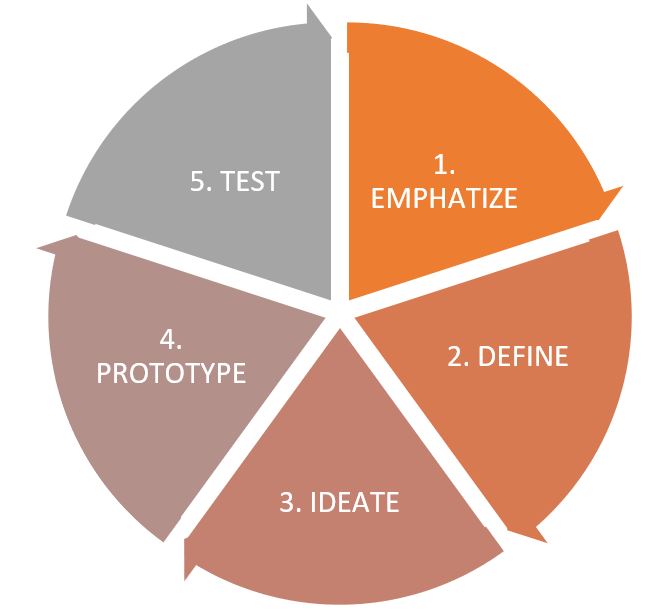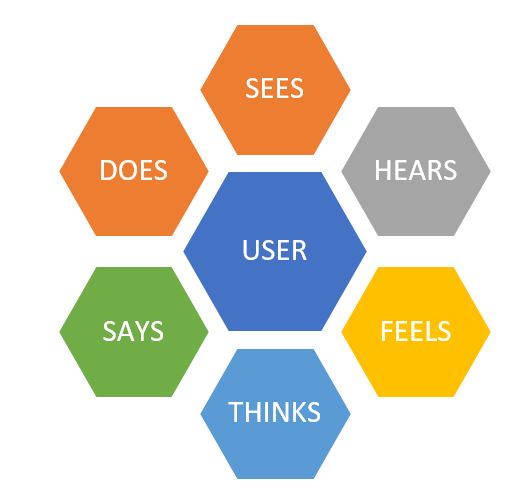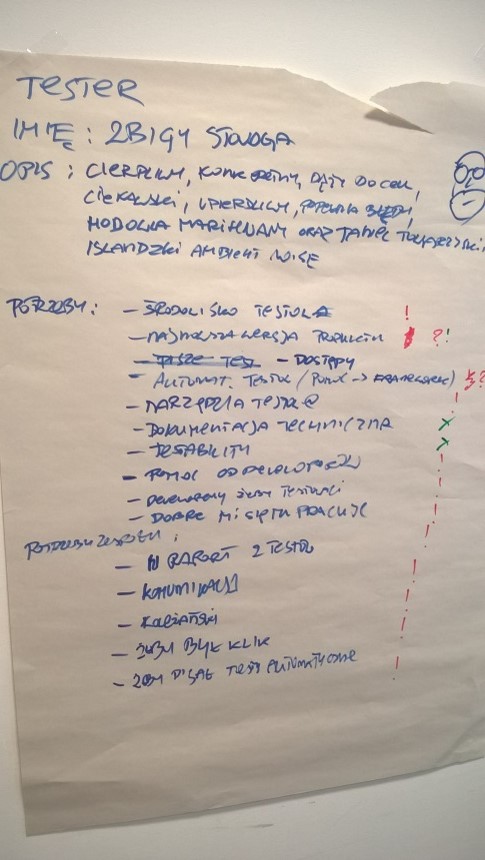Tests in every organization and team can and should be designed to take into account the needs of all stakeholders. Let’s see how we can use design thinking in testing.
A few years ago, I was tasked with designing a test service for an agile team producing software for a new technology company. For this purpose, I decided to use design thinking, which is used by, among others, Ikea to design its stores.
In the article, I will briefly present the basic assumptions of design thinking and how I managed to use them in building a testing service.
What is design thinking?
Design thinking is Princeton’s response to the need to include the customer in the design process. Design thinking is a design method that emphasizes understanding users, creating innovative solutions, and iteratively testing ideas. It’s an approach that comes primarily from the design field but has found application in a variety of fields, including business, education, and engineering.
The main assumptions of design thinking are:
- focusing on the user – understanding his conscious and unconscious needs,
- interdisciplinary team – looking at the problem from many perspectives,
- experimenting and frequent testing of hypotheses – building prototypes and collecting feedback from users.
As a result, solutions are created that are:
- desired by users,
- technologically feasible,
- economically justified.
Design thinking has gained popularity due to its effectiveness in solving a variety of problems from the perspective of users from the very beginning of the design process.
Description of the individual phases of design thinking

Design thinking typically includes five main phases:
- Empathize – empathizing with the problem. The goal of this phase is to understand users and identify their needs, problems and motivations. Designers engage directly with users, observing their actions, talking to them and trying to empathize with them. Interviews, field observations, and other research methods help gather a deep understanding of the user’s perspective.
- Define or Defining the problem – based on the collected information, designers define the problem they want to solve. Defining the problem is key to focusing on the important issues and avoiding distraction. At this stage, the so-called “personas”, i.e. abstract profiles representing various user groups.
- Ideate – in the idea generation phase, teams try to create as many ideas as possible to solve a defined problem. Creative thinking techniques are used, such as brainstorming, mind mapping and SWOT analysis. Every idea is important (and good at this stage), and creativity is very important.
- Prototype – at this point, designers move from abstract ideas to concrete prototypes. Prototypes can take various forms – from drawings, and mock-ups, to interactive prototypes. The goal is to create a visual or physical representation of an idea that can be tested and evaluated by users.
- Test – prototypes are presented to users in an environment close to real conditions. User feedback is collected, analyzed and used to further improve the design. This process may require multiple iterations to successfully adapt the solution to actual needs.
The above phases do not have to be strictly implemented and there is almost always a need to return to previous phases to adjust or understand the problem better, which encourages a flexible approach and continuous adaptation. It is important to remember that design thinking is an iterative process. After testing and obtaining feedback, the project is adjusted and the process is repeated until the optimal solution is achieved.
Design thinking can be applied in a variety of contexts and industries to develop innovative and user-centric solutions.
Tools in design thinking
Design thinking offers several tools that we can use not only for the design process but also in testing. Below I will present some examples of tools used in individual stages of design thinking.
In the first phase of empathizing with the user’s problem, the following is used:
- empathy map – helps organize collected information about users, their needs, desires and challenges. It is supposed to answer the question of what the user sees, thinks, feels, hears, says and does.

- creating personas – creating abstract profiles representing various user groups, which helps to understand their intentional behavior. I wrote more about customer personas in the article: Persona – testing using techniques from RPG games.
The basic features of Persona are:
- final goal – what does the persona want to achieve with the product/service?
- motivation – why is a person interested in the product/service?
- barriers – what irritates her and may discourage her from using the product/service?
- opportunities – what could increase her interest in a given product/service?
- influence – how to influence them to use the product/service?
In the problem definition phase, you use:
- problem dictionary – defining the problem in the form of a set of short sentences helps to precisely formulate what should be worked on.
- “5 Whys” – “Why” questions help identify the deeper causes of problems.
When generating ideas, we use the following:
- brainstorming – a traditional method of generating many ideas in a short time.
- mind mapping – using diagrams to visually represent the relationships between different ideas.
The commonly used tools in prototyping are:
- storyboard – illustrations of a sequence of events that help understand interactions with the user in a specific context.
- mockups and interactive prototypes – using tools to quickly create visual representations of ideas that can be tested.
The following are used for testing:
- user testing – simple testing sessions during which users interact with prototypes, providing feedback.
- feedback grid – a structure for organizing and analyzing feedback from users.
Case study – using design thinking in testing
My and the team’s task was to develop a method of cooperation and propose how the team would test the software.
The initial situation was as follows:
- product delivered to the customer every two weeks,
- use of agile methodologies,
- new people in the team,
- new people in the company,
- no established testing processes.
Thanks to the fact that new people joined the team, including testers, programmers and architects, we had the opportunity to redefine how to work and how to deliver tested pieces of software to the end customer. Finally, together with the entire team, define the quality of the software they produce and decide what measures and tools the team will use to ensure that the process works properly.
I proposed conducting test workshops with programmers, testers, Project Manager and Product Owner. I have divided the agenda into the following parts:
- An introduction to the design thinking technique (presented above).
- Joint preparation of personas profiles:
- end customer,
- Product Owner,
- Project Manager,
- tester,
- programmer,
- stakeholder.
- Preparing a prototype of a test service that meets the requirements of all persons.
- Testing the procedure.
- Implementation in the first sprint.
- Further development of the procedure:
- automatic tests,
- learning how to estimate tests,
- product learning.
Course of the meeting

The meeting was planned for two days of workshops, during which we could all get to know each other and integrate.
After the introduction, we started writing personas. Each of the defined roles was described – e.g. the tester was curious, found bugs, persistent. Then we determined the needs of each person, their priorities and who in the organization is responsible for their implementation. This allowed us to immediately talk about when we could start testing and what it meant when a user story was ready for testing.
We managed to define the needs of stakeholders, so we knew what information was needed and who needed it. Moreover, during the presentation, we all had the opportunity to get to know the product and the end customer.
Conclusions
The joint meeting and the team’s decision on what the testing process should look like, why we do tests and for whom were important for the formation of the team and the principles of working together. Testers and programmers had a chance to talk about their needs and set common quality goals.
Of course, not everything worked out the first time – the process still had to be changed during retrospective meetings, and knowledge about the technology and product had to be built.
From my point of view, such workshops were important in understanding a common perspective for the team in the context of quality. One problem was testing the process itself during the meeting – we decided to do it during the team’s first iteration.
Testing has become a joint activity of the entire team 🙂
Literature
- B. R. Ingle, Design Thinking dla przedsiębiorców i małych firm, 2014, Gliwice, Helion
- Co to jest design thinking
- Personapp
- Persona – testing with the use of techniques from rpg games
- 3 historie sukcesu, których podstawą był design thinking
***
If you are interested in design thinking, also take a look at another article by our expert: African tech-startup experience: good Design thinking strategy is a good business.
















Leave a comment